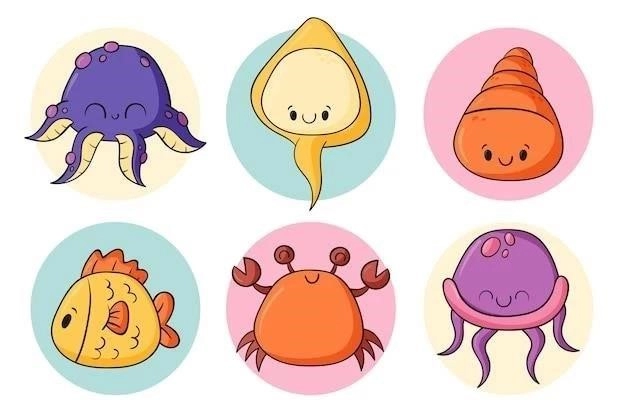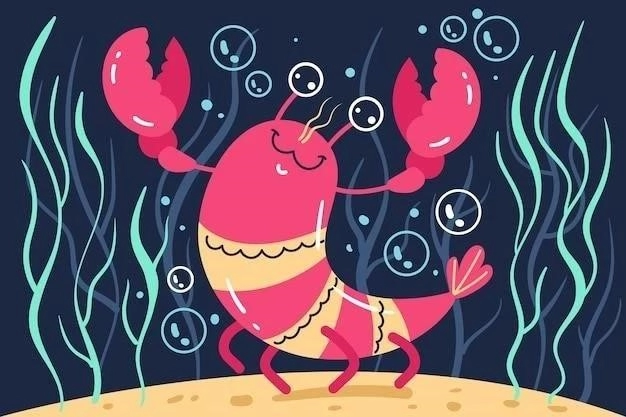The Blobfish: A Denizen of the Deep
The blobfish, scientifically known as Psychrolutes marcidus, is a unique and fascinating deep-sea creature that has gained popularity due to its distinctive appearance. Often described as the world’s ugliest fish due to their hooked, gelatinous appearance, blobfish have adapted to life in the extreme depths of the ocean, where food is scarce and the pressure is immense.
Physical Characteristics and Adaptations
The blobfish, a denizen of the deep, possesses a truly unique physique shaped by the extreme conditions of its environment. Found at depths where the pressure can be over 100 times that at sea level, the blobfish exhibits adaptations that are crucial to its survival.
Unlike most bony fish, blobfish lack a swim bladder, an air-filled sac that aids in buoyancy. This adaptation is crucial in the deep sea, as the immense pressure would crush a gas-filled organ. Instead, the blobfish’s body is primarily composed of a gelatinous mass with a density slightly less than that of water. This unique composition allows the blobfish to maintain neutral buoyancy, conserving energy as it floats effortlessly above the seabed.
Furthermore, the blobfish’s skeletal structure is remarkably different from its bony counterparts. Its bones are soft and cartilaginous, offering flexibility and resilience under immense pressure. This adaptation prevents the blobfish’s skeleton from being crushed at depth and contributes to its ability to maintain its shape.
The blobfish’s appearance is another striking adaptation to its deep-sea habitat. Its skin is loose and flabby, lacking scales, and is often described as having a “melting” appearance when brought to the surface. This gelatinous skin, combined with its minimal muscle mass, helps the blobfish conserve energy in an environment where food is scarce.
The blobfish’s physical adaptations are a testament to the remarkable diversity of life in the deep sea. Its lack of a swim bladder, soft bones, gelatinous flesh, and minimal musculature are all crucial for its survival in an environment characterized by extreme pressure, cold temperatures, and limited food resources.
Habitat and Range
The blobfish, a creature specifically adapted for survival in extreme environments, calls the bathyal zone its home. This deep-sea region, extending from 2,000 to 4,000 feet below sea level, is characterized by near-freezing temperatures, perpetual darkness, and immense pressure. These harsh conditions make the bathyal zone inhospitable for most marine life, but the blobfish thrives in this environment.
Geographically, the blobfish’s range is primarily restricted to the waters off the coasts of Australia, Tasmania, and New Zealand. These regions are known for their deep-sea trenches and canyons, which provide the ideal habitat for this unique species. The specific distribution of blobfish within this range is thought to be patchy, influenced by factors such as prey availability and suitable seabed conditions.
The blobfish’s preference for the bathyal zone is intrinsically linked to its unusual adaptations. Its lack of a swim bladder, essential for buoyancy control at shallower depths, becomes an advantage in the extreme pressure of the deep sea. Similarly, its gelatinous body, lacking strong muscles, allows it to conserve energy in an environment where food is scarce.
Despite its seemingly secure habitat, the blobfish faces increasing threats from human activities. Deep-sea fishing practices, particularly bottom trawling, pose a significant risk to blobfish populations. These fishing methods involve dragging large nets along the seabed, indiscriminately capturing creatures in their path, including blobfish. As by-catch, blobfish are often discarded, with little understanding of the long-term impacts on their populations.
Further research and conservation efforts are crucial to ensure the long-term survival of the blobfish in its unique and fragile deep-sea habitat. Protecting these enigmatic creatures and their environment is essential for maintaining the biodiversity and ecological balance of our oceans.

Diet and Feeding Habits
The blobfish, a fascinating denizen of the deep sea, has a feeding strategy as intriguing as its unusual appearance. Inhabiting an environment where food is scarce, the blobfish has evolved to be an opportunistic feeder, consuming a variety of small organisms that venture within its reach.
Lacking powerful muscles and a swim bladder, the blobfish is not a pursuit predator. Instead, it employs a strategy known as “sit-and-wait” or “ambush” predation. Hovering slightly above the seabed, the blobfish relies on its excellent camouflage and patience to capture unsuspecting prey.
Its diet primarily consists of slow-moving crustaceans, such as crabs, lobsters, and sea urchins, which are abundant on the deep-sea floor. It also consumes small fish, sea pens (colonial marine animals), and carrion (decaying organic matter) that drift within its reach.
The blobfish’s feeding adaptations complement its sedentary lifestyle. Its large mouth and expandable stomach allow it to engulf prey larger than its own head, maximizing energy intake from infrequent meals. Its lack of teeth further facilitates swallowing prey whole, conserving energy that would otherwise be spent on chewing.
The precise details of the blobfish’s feeding habits remain shrouded in mystery due to the challenges of observing these deep-sea creatures in their natural habitat. However, based on the contents of their stomachs and the understanding of their physiology, scientists have pieced together a comprehensive picture of their diet and feeding strategies.
Despite its seemingly unassuming nature, the blobfish plays a crucial role in maintaining the delicate ecological balance of the deep-sea ecosystem. Its feeding habits contribute to regulating prey populations and facilitating nutrient cycling in this unique and vital part of our oceans.

The Blobfish Out of Water: A Transformation in Appearance
The blobfish, a creature adapted for the crushing pressures of the deep sea, undergoes a dramatic transformation when brought to the surface. Its iconic “droopy” appearance, often described as “the world’s ugliest fish,” is a direct result of the drastic pressure change and not its natural state.
In the depths where the blobfish resides, the pressure can be over 100 times greater than at sea level. Its gelatinous body, lacking a rigid skeleton and air-filled swim bladder, is specifically adapted to withstand this immense pressure. This unique physiology allows the blobfish to maintain its shape and buoyancy in its natural environment.
However, upon being brought to the surface, the drastic reduction in pressure has a significant impact on the blobfish’s appearance. The lack of external pressure causes the blobfish’s gelatinous tissues to expand, resulting in its characteristic “melting” or “drooping” visage. Its skin, normally taut and smooth, becomes loose and flabby, giving the impression of a deflated balloon.
This dramatic transformation highlights the crucial role of pressure in shaping deep-sea life and the challenges of studying these creatures in their natural habitat. The blobfish’s “ugly duckling” transformation out of water serves as a reminder of the extraordinary adaptations that allow life to thrive in the extreme conditions of the deep sea.

Furthermore, it emphasizes the importance of responsible research and conservation practices. Images of the blobfish’s distorted appearance, while striking, can perpetuate misconceptions about its natural form and the diversity of life in the deep sea. By understanding the reasons behind its transformation, we can appreciate the blobfish as a fascinating example of evolutionary adaptation and advocate for the protection of its deep-sea home.
Conservation Status and Threats
The conservation status of the blobfish, a creature inhabiting a remote and challenging-to-study environment, is a topic of ongoing scientific investigation. Currently, the International Union for Conservation of Nature (IUCN) lists the blobfish as “Data Deficient,” indicating insufficient information to make a reliable assessment of its extinction risk.
Despite the lack of definitive data, several factors raise concerns about the blobfish’s long-term survival. Deep-sea fishing practices, particularly bottom trawling, pose a significant threat. These fishing methods involve dragging large nets along the seabed, indiscriminately capturing creatures in their path, including blobfish. As bycatch, blobfish are often discarded, contributing to their mortality.

Furthermore, the blobfish’s slow reproductive rate exacerbates its vulnerability to population decline. While the specifics of its reproduction remain largely unknown, scientists believe that blobfish are slow-growing and produce relatively few offspring. This characteristic, common to many deep-sea species, makes them highly susceptible to overfishing and environmental changes.
Climate change adds another layer of complexity to the blobfish’s conservation outlook. As ocean temperatures rise and acidification increases, the delicate balance of the deep-sea ecosystem is disrupted. These changes can impact prey availability, habitat suitability, and the survival rates of blobfish larvae, potentially leading to population declines.
Addressing the conservation concerns surrounding the blobfish requires a multi-faceted approach. Improved fishing practices, including the use of more selective gear and the establishment of marine protected areas, are crucial to minimize bycatch and protect vulnerable habitats. Enhanced research efforts are essential to gather more data on blobfish populations, distribution, and life history, enabling informed conservation strategies.
The Blobfish in Popular Culture
Despite its existence in the deep, dark recesses of the ocean, far removed from the public eye, the blobfish has surfaced in a rather unexpected realm – popular culture. Its unusual appearance, a stark contrast to the sleek beauty often associated with marine creatures, has ironically catapulted it to a peculiar form of fame.
The blobfish’s rise to notoriety can be largely attributed to its “unconventional” looks. Its gelatinous, almost mournful visage, a consequence of decompression when brought to the surface, has captivated the public’s imagination, leading to its widespread recognition as “the world’s ugliest fish.” This dubious honor, bestowed through viral internet memes and online polls, has solidified its place as a cultural phenomenon.
Beyond its perceived ugliness, the blobfish has become a mascot for the weird and wonderful diversity of the deep sea. Its image graces everything from plush toys and t-shirts to coffee mugs and phone cases. It has starred in viral videos, inspired art installations, and even made cameo appearances in television shows and commercials.
While its portrayal in popular culture often leans towards humor, it has inadvertently sparked public curiosity about the deep sea and its inhabitants. The blobfish’s unique biology, its adaptations to extreme pressure and darkness, and the threats it faces from human activities have become talking points in a wider conversation about ocean conservation.
In an unexpected twist, the blobfish’s journey from obscure deep-sea dweller to pop culture icon highlights the power of imagery and the interconnectedness of science, conservation, and public perception. By captivating the public’s imagination, this unusual fish has opened a window to the mysteries of the deep and underscored the importance of protecting our oceans and their remarkable inhabitants.

Future Research and Discoveries
The blobfish, a resident of the deep-sea realm, remains an enigma in many ways. Despite its recent surge in popularity, fueled by its unconventional appearance, much about its biology, behavior, and ecological role remains shrouded in mystery. However, advancements in deep-sea exploration and research techniques offer exciting possibilities for unraveling the secrets of this elusive creature.

One avenue of research focuses on developing non-invasive observation methods. Submersibles equipped with high-resolution cameras and remotely operated vehicles (ROVs) with manipulator arms are becoming increasingly sophisticated. These tools allow scientists to observe blobfish in their natural habitat without the need for capture and decompression, providing invaluable insights into their natural behavior, feeding habits, and interactions with their environment.
Genetic studies offer another promising area of research. Analyzing the blobfish’s DNA can reveal valuable information about its evolutionary history, population structure, and genetic diversity. This knowledge is crucial for assessing its conservation status and developing effective management strategies to ensure its long-term survival.
Furthermore, understanding the blobfish’s physiological adaptations to extreme pressure and darkness holds significant potential for biomedical research. The mechanisms that allow its gelatinous body to withstand immense pressure and its unique cellular processes could inspire new biomaterials and therapeutic approaches for human health.

The future of blobfish research is filled with exciting possibilities. As we delve deeper into the mysteries of the deep sea, this unusual creature will undoubtedly continue to captivate our imaginations and inspire scientific inquiry. By unlocking the secrets of the blobfish, we not only gain a better understanding of this remarkable species but also broaden our knowledge of the deep sea, a vast and vital ecosystem that remains largely unexplored.










